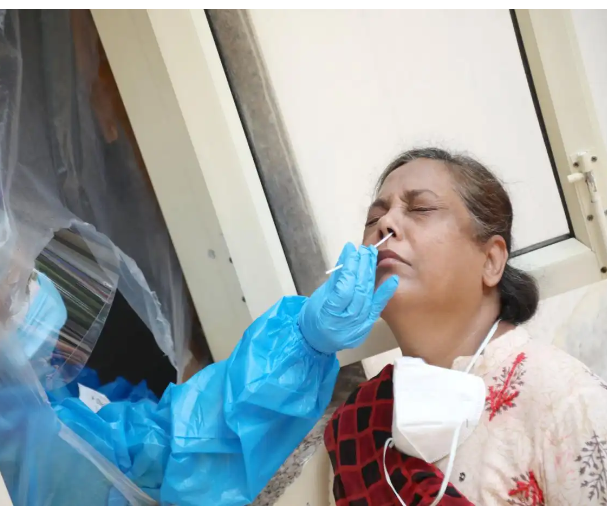67,151 new cases, 1,059 deaths take India’s Covid-19 caseload to 32,34,474 and toll to 59,449, the health ministry said. While the government also said that with positivity rate progressively falling, testing has worked as an effective tool to limit the spread of Covid-19 infection.

Five most affected states by total tally of cases are Maharashtra (718,711), Tamil Nadu (397,261), Andhra Pradesh (3,82,469), Karnataka (300,000), and Uttar Pradesh (197,000). Delhi recorded its highest single-day spike in August with 1,693 coronavirus cases, taking tally to 165,764.
Punjab Chief Minister Amarinder Singh on Wednesday said twenty-three ministers and MLAs were coronavirus positive two days before the Vidhan Sabha session on August 28. He gave the figure during a video conference convened by Congress President Sonia Gandhi with the chief ministers of seven Opposition-ruled states to discuss various issues.
Himachal Pradesh on Wednesday recorded 167 fresh COVID-19 cases, raising the infection tally to 5,322, while the death toll from the disease climbed to 31 with two more fatalities. The total number of active cases in the state stands at 1,428, Shimla Additional Chief Secretary (Health) R D Dhiman said. Of the latest fatalities, one each was reported from Kangra and Chamba districts.
West Bengal government extended the bi-weekly lockdown in the state till the middle of September.
The Mamata Banerjee government relaxed the restriction on domestic flights from high prevalence places to Kolkata from September. “We have received several requests to resume flight operations from six COVID-19 hotspot states. So from September 1, flight services from these six states can resume thrice a week,” Banerjee said.
Five reasons why Delhi’s Covid-19 cases spiked, according to a report by HT.
1. POOR MASK DISCIPLINE
Experts have repeatedly pointed out the laxity across the city when it comes to people wearing masks.
2. REOPENING OF THE CITY
The rise in cases in Delhi has coincided with the gradual reopening of city — workplaces, markets, malls, restaurants, hotels and weekly markets.
3. PLATEAU IN TESTING
The rise in cases has corresponded with the number of daily tests being on a near-steady drop from peak levels. The seven-day average for tests stands at 17,924 — significantly off the peak of 21,660, which was for the week ending July 9.
4. STATISTICAL VARIATION
A common occurrence among all Covid-19 statistical analysis across the world has been that infections can rise and drop in spurts.
5. SECOND WAVE COMING?
Although the government and experts still say there is no second wave Covid-19 in Delhi, the chances of that happening in the not-too-distant future remains high.